
The Okinawan diet is well-known for its health benefits and has gained popularity for promoting longevity and well-being. I believe exploring tasty and nutritious recipes from this diet can help anyone make healthier food choices. These recipes highlight the key ingredients that contribute to the Okinawan lifestyle, making it easier to adopt this beneficial way of eating.
In this article, I will share my top 11 Okinawa diet recipes that are not only delicious but also simple to prepare. Each recipe reflects the principles of this time-honored diet, focusing on whole, nutrient-rich foods. By incorporating these dishes into my meals, I’ve found myself enjoying both flavor and health.
1. Goya Champuru

Goya Champuru is a traditional Okinawan stir-fry dish. It primarily features goya, also known as bitter melon. This vegetable is well-known for its health benefits and unique flavor.
I find Goya Champuru quite easy to make. It typically takes around 20-30 minutes from start to finish.
To prepare this dish, follow these steps:
- Ingredients: Gather goya, tofu, pork (or another protein), and soy sauce.
- Prepare Goya: Slice the goya in half and remove the seeds. Then, cut it into thin slices.
- Cook Tofu: Cube the tofu and pan-fry it until golden brown. Set aside.
- Cook Meat: In the same pan, cook your chosen protein until browned.
- Add Goya: Toss in the sliced goya and sauté for about 5 minutes.
- Combine: Add the tofu back to the pan. Stir in soy sauce and cook for another 2-3 minutes.
Enjoying Goya Champuru is not just about flavor; it’s also a nourishing choice that represents Okinawan culture. It’s a simple yet satisfying dish that showcases the healthful ingredients of the Okinawan diet.
2. Okinawa Soba

Okinawa Soba is a traditional noodle dish from the Okinawa region of Japan. These noodles are usually made from wheat flour and have a chewy texture. I find them delicious and versatile for various meals.
Making Okinawa Soba is quite easy. Here are the simple steps I follow:
- Prepare the Broth: I start by simmering pork bones with water, garlic, and ginger for about 2-3 hours. This creates a rich, hearty broth.
- Cook the Noodles: In a separate pot, I boil the Okinawa soba noodles for around 5-7 minutes until they are tender.
- Assemble the Dish: Once the noodles are cooked, I drain them and add them to the broth.
- Garnish: I top my soba with sliced green onions, pickled ginger, and sometimes some cooked pork or fish cakes.
Okinawa Soba is not only easy to prepare but also offers a comforting meal that reflects the region’s culinary heritage. I enjoy it as a main dish or a hearty snack.
3. Rafute (Okinawan Braised Pork Belly)
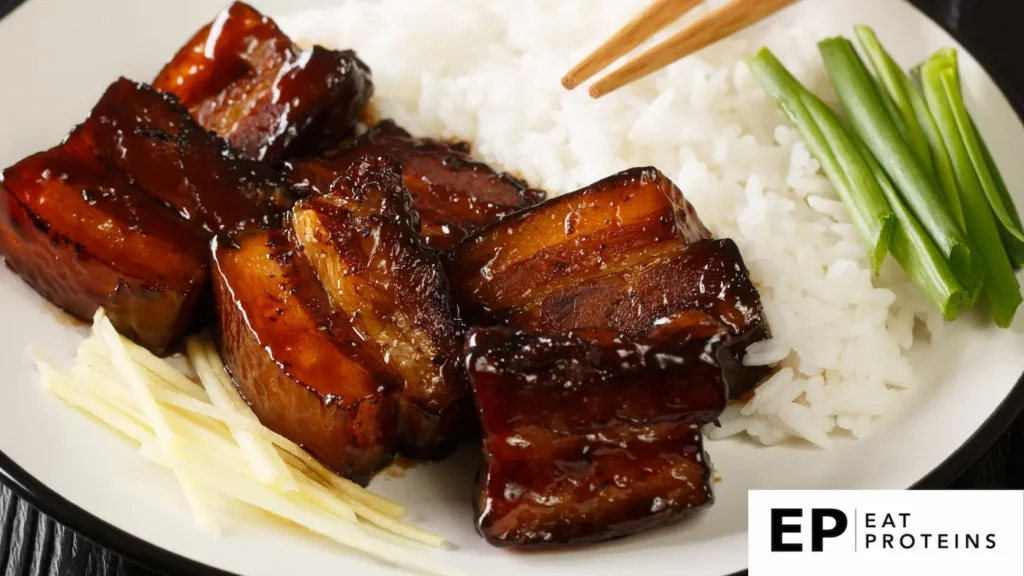
Rafute is a traditional Okinawan dish featuring braised pork belly. This rich dish is known for its tender meat and flavorful sauce, making it a favorite in Okinawan cuisine.
Making rafute is quite simple. I usually start with pork belly, which I cut into cubes. The key ingredients include soy sauce, sake, and brown sugar.
To cook, I follow these steps:
- Prepare the Pork: First, I blanch the pork in hot water for a few minutes to remove impurities.
- Sauté: Next, I sauté the pork in a pot until lightly browned.
- Add Ingredients: I then add soy sauce, sake, and brown sugar to the pot.
- Simmer: After that, I let it simmer on low heat for about 2-3 hours until the pork is tender.
The result is savory, melt-in-your-mouth pork that’s perfect served with rice or as part of a larger meal. Rafute is a comforting dish and a great way to experience authentic Okinawan flavors.
4. Mimiga (Okinawan Pig’s Ear Salad)
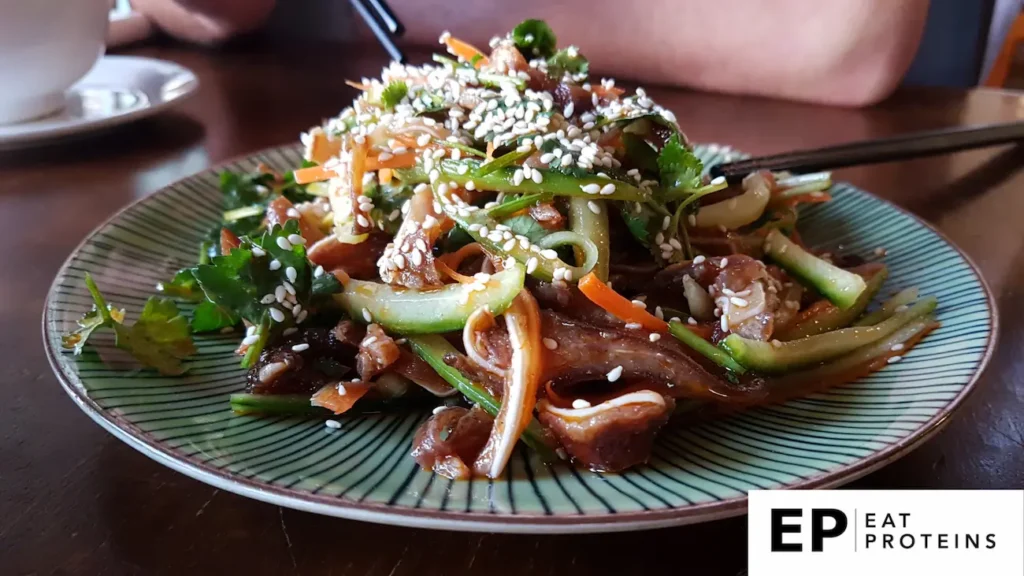
Mimiga, or Okinawan pig’s ear salad, is a unique dish made from pig’s ears. This salad is known for its chewy texture and combines various flavors with a tangy dressing.
Making Mimiga is quite simple. Here’s how I prepare it:
- Prepare the Pig’s Ears: Clean and boil the pig’s ears for about 2 hours until they are tender.
- Slice: Once cooled, slice the ears into thin strips.
- Make the Dressing: Mix vinegar, soy sauce, and miso in a bowl to create a tangy dressing.
- Combine: In a mixing bowl, add the sliced pig’s ears, chopped cucumber, and bean sprouts. Pour the dressing over the top.
- Serve: Toss everything together and serve chilled.
This dish is not only delicious but also offers a glimpse into the culinary traditions of Okinawa. I enjoy its crunch and the balance of flavors, making it a delightful addition to any meal.
5. Taco Rice

Taco Rice is a popular dish in Okinawa that blends Mexican flavors with Japanese rice. It features seasoned ground meat, fresh vegetables, and a base of fluffy rice. This dish is easy to prepare and can be customized with various toppings.
To make Taco Rice, I start by cooking the rice. I usually use Japanese short-grain rice for the best texture. While the rice is cooking, I brown the ground meat in a pan.
Here are the simple steps I follow:
- Cook 1 cup of rice according to package instructions.
- In a separate skillet, brown 1 pound of ground beef or turkey over medium heat.
- Add 1 packet of taco seasoning and 2/3 cup of water. Simmer for 5 minutes.
- Once the rice is ready, fluff it with a fork and serve it on a plate.
- Top the rice with the seasoned meat, then add diced tomatoes, shredded lettuce, and cheese.
I enjoy this dish because it’s quick and satisfying. Taco Rice not only fills you up but also brings a taste of Okinawa right to your table.
6. Nabera Irichi (Stir-fried Sponge Gourd)
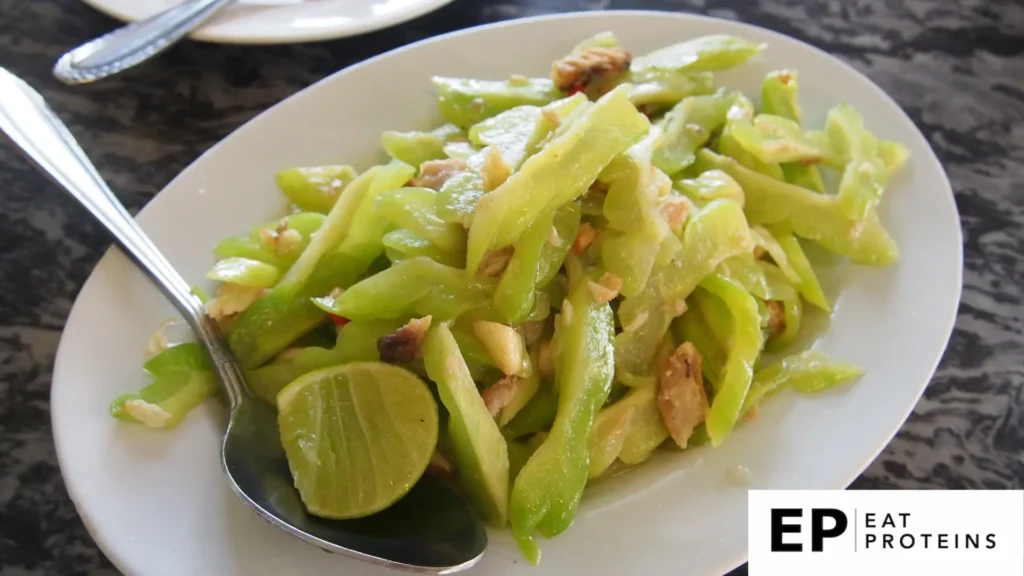
Nabera Irichi is a popular dish in Okinawa made with sponge gourd, also known as luffa. It has a mild flavor and a unique texture. This dish is not only tasty but also easy to prepare.
To make Nabera Irichi, I gather these ingredients: sponge gourd, bonito flakes, soy sauce, garlic, and onions. The preparation is simple and quick.
- First, I wash and slice the sponge gourd into thin strips.
- Then, I heat a little oil in a pan over medium heat.
- Next, I sauté chopped onions and minced garlic until fragrant.
- I add the sponge gourd strips and stir-fry for about 5 minutes.
- Finally, I mix in soy sauce and bonito flakes, cooking for an additional 2 minutes.
This dish is light, healthy, and pairs well with rice. It highlights the fresh taste of sponge gourd and is a great example of Okinawan cuisine.
7. Agu Pork

Agu pork is a traditional Okinawan dish made from a special breed of pig known for its rich flavor and tenderness. This pork is often considered a delicacy in Okinawa.
I find Agu pork easy to make, and it can be prepared in various ways. One simple method is to braise it, which enhances its natural taste.
To prepare Agu pork, follow these steps:
- Prepare the Pork: Cut Agu pork into chunks, about 1 to 2 inches each.
- Season: Rub the chunks with salt, black pepper, and a bit of soy sauce.
- Brown: Heat a pan over medium heat, add a little oil, and brown the pork on all sides.
- Braise: Add garlic and ginger, then pour in enough water to cover the meat.
- Simmer: Bring to a boil, then reduce heat and let it simmer for about 1.5 to 2 hours until tender.
- Serve: Enjoy it with steamed vegetables or over rice for a complete meal.
Agu pork not only showcases the unique flavors of Okinawa but also makes a hearty dish for any occasion.
8. Umi Budo (Sea Grapes)
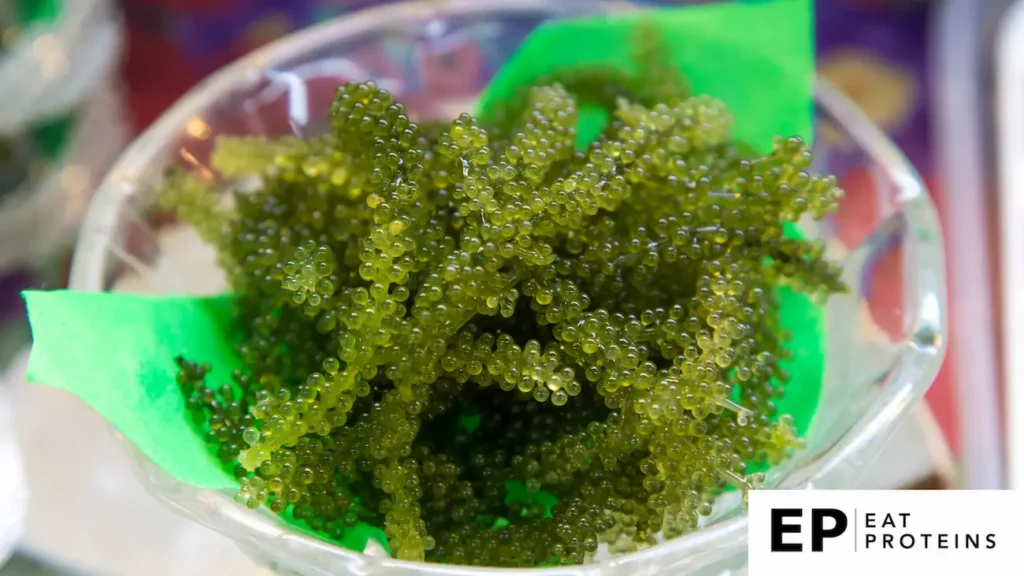
Umi Budo, also known as sea grapes, is a unique seaweed that grows in the waters around Okinawa. It has a crunchy texture and a mild, salty taste. I enjoy incorporating it into my meals for its nutritional benefits and delicious flavor.
Making umi budo at home is quite easy. I often find it in local markets or online. It requires minimal preparation, making it a convenient ingredient.
Here are the steps I follow to prepare umi budo:
- Rinse the sea grapes gently under cold water to remove any salt.
- Soak them in cold water for about 10 minutes. This helps to restore their crunchiness.
- Drain the water well before serving.
I like to serve umi budo in salads or as a side dish. It pairs well with rice vinegar and sesame oil, enhancing its flavor. You can also enjoy it alone as a healthy snack. Umi budo is a perfect addition to any meal for a taste of Okinawa.
9. Tofuyo (Fermented Tofu)
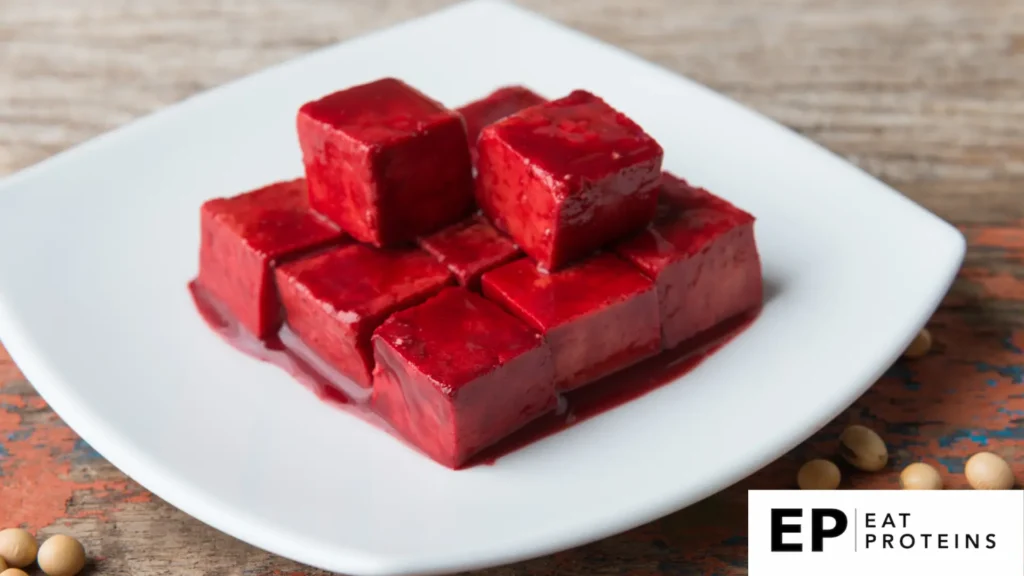
Tofuyo is a type of fermented tofu popular in Okinawa. It has a rich, savory flavor and creamy texture. This unique dish is both nutritious and versatile, often enjoyed in small amounts.
Making Tofuyo is easy and requires minimal ingredients. The main components are tofu, rice, and a bit of sake. I find the fermentation process fascinating because it enhances the flavor and preserves the tofu.
Here are some simple steps to make Tofuyo:
- Prepare the Tofu: Start with firm tofu. Drain it and press it for about 30 minutes to remove excess water.
- Make the Mixture: Mix equal parts of cooked rice and sake. You can also add a little salt for flavor.
- Ferment: Cut the tofu into cubes and coat them with the rice mixture. Place them in a jar, cover it, and let it sit in a cool, dark place for about one to two weeks.
- Ready to Eat: After fermentation, Tofuyo is ready to be enjoyed. It pairs well with rice or can be eaten on its own as a snack.
This dish reflects Okinawa’s rich culinary traditions and is a great addition to any meal.
10. Beni Imo (Okinawan Purple Sweet Potato)
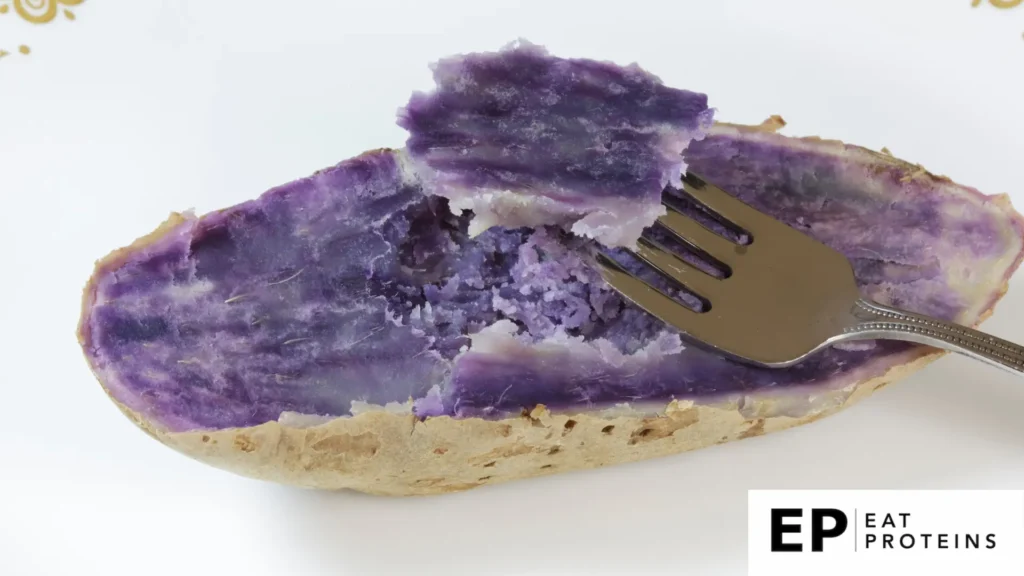
Beni Imo is a type of purple sweet potato native to Okinawa. It is known for its vibrant color and sweet, rich flavor. I find it a nutritious addition to any meal, packed with vitamins and antioxidants.
Making Beni Imo is quite simple. I often prepare it by boiling or baking. It has a creamy texture that pairs well with various dishes. Here are quick steps for cooking:
- Start by washing the sweet potatoes thoroughly.
- Peel them if you prefer, though the skin is edible.
- Cut them into equal-sized pieces for even cooking.
- Boil in water for about 30 minutes or until tender, or bake at 400°F for 45-60 minutes.
- Let them cool slightly and enjoy!
Beni Imo can be used in various recipes, from desserts to savory dishes. It’s versatile and adds a lovely color to any plate.
11. Munata (Green Papaya Salad)
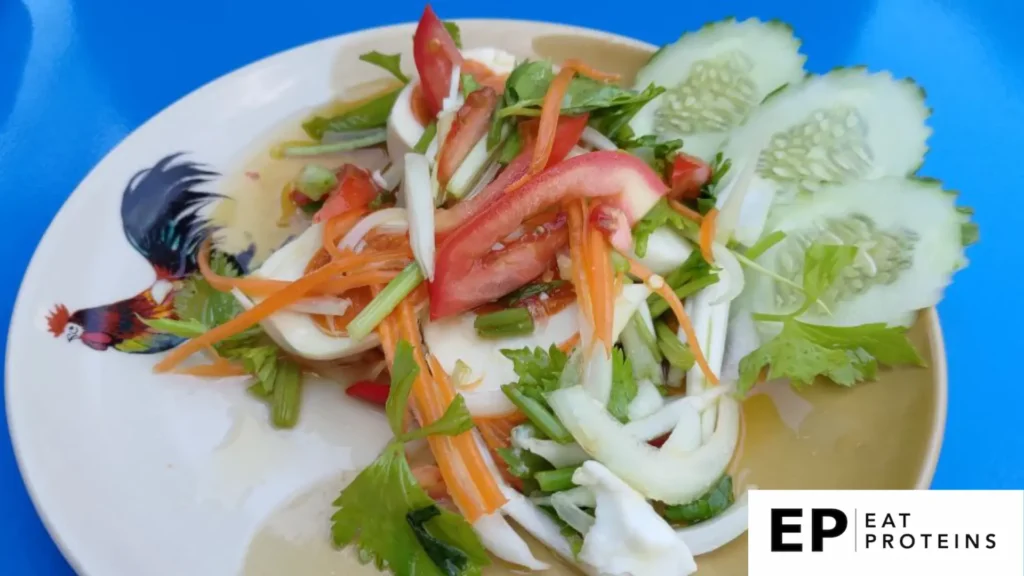
Munata, or green papaya salad, is a refreshing dish from Okinawa. It features unripe papaya, which has a crunchy texture and a mild flavor. This salad is not just tasty, but also packed with nutrients.
Making Munata is easy and quick. I typically prepare it in about 15 minutes. The main ingredients include green papaya, carrots, and a tangy dressing.
Here are the steps I usually follow:
- Peel and shred 1 medium green papaya.
- Grate 1 large carrot.
- In a bowl, mix 3 tablespoons of lime juice, 1 tablespoon of soy sauce, and 1 tablespoon of sesame oil for the dressing.
- Combine the shredded papaya and grated carrot in a large bowl.
- Pour the dressing over the salad and toss well.
I enjoy adding sesame seeds or chopped herbs for extra flavor. This dish is not only simple to make but also a great addition to any meal.
What are the origins of the Okinawa Diet?

The Okinawa diet has deep roots in the culture and history of the region. Understanding its origins and significance provides insight into its health benefits and unique characteristics.
I find the origins of the Okinawa diet fascinating. Historically, the diet emerged from the availability of local ingredients and traditional cooking methods. The islands’ subtropical climate supports a variety of vegetables, seafood, and grains.
Okinawans typically consume sweet potatoes, green leafy vegetables, tofu, and fish. The emphasis is on fresh, seasonal produce. The common practice of consuming smaller portions contributes to achieving a balanced diet. Ancient dietary customs also promoted health and longevity.
How is the Okinawa Diet culturally important in Okinawa?
The cultural importance of the Okinawa diet is significant. Food in Okinawa is more than sustenance; it is a part of social gatherings and traditions. Meal preparation often involves family participation, strengthening community bonds.
Festivals and celebrations showcase traditional dishes that reflect this rich culinary heritage. Dietary practices also emphasize respect for food, often expressing gratitude before meals. This mindset fosters a deep appreciation for ingredients and promotes healthy eating patterns among the people.
In this way, the Okinawa diet is interwoven with identity, health, and community, offering valuable lessons in how food can enhance life.
The Okinawan diet is rich in key nutrients that contribute to its health benefits. I find these nutrients essential for maintaining energy and overall well-being. Below, I explore the important nutrients and the specific health advantages they offer.
What are the Key Nutrients in the Okinawa Diet?
The Okinawan diet includes a wide variety of foods, which provides an excellent profile of essential nutrients. Some of the key nutrients are:
- High in Antioxidants: This diet features plenty of colorful vegetables and fruits that help protect the body from oxidative stress.
- Omega-3 Fatty Acids: Sources like fish contribute to heart health and improved brain function.
- Fiber: Whole grains, legumes, and vegetables allow for better digestion and may aid in weight management.
- Low Glycemic Load: Many foods are low in refined sugars, helping to maintain stable blood sugar levels.
These nutrients work together to promote health and longevity. I appreciate how balanced meals from this diet support a healthy lifestyle.
What are the health benefits of the Okinawa Diet?
Following the Okinawan diet can lead to numerous health advantages. Here are some noteworthy benefits:
- Longevity: Research suggests that people following this diet tend to live longer, healthier lives. This is often attributed to its nutrient density.
- Reduced Chronic Disease Risk: This diet may lower the chances of developing diseases such as heart disease and diabetes.
- Weight Management: The low-calorie, nutrient-dense nature of the diet helps maintain a healthy weight without feeling deprived.
- Improved Digestion: High fiber content supports digestive health and regularity.
Overall, the combination of these benefits helps improve quality of life. I find the focus on whole, natural foods particularly enriching for my health.
How are traditional cooking methods used in the Okinawa Diet?
When preparing Okinawan dishes, there are key traditional cooking methods to consider, along with some modern adaptations. Each technique has its own benefits and can influence the flavors and health aspects of the food I prepare.
What Traditional Cooking Methods are used in the Okinawa Diet?
The Okinawan diet often features cooking methods that emphasize simplicity and health. Steaming, boiling, and sautéing are common techniques that help to retain nutrients. Using fresh ingredients is crucial, as it enhances flavors while keeping dishes light.
For example, sweet potatoes are typically boiled or steamed to keep their natural sweetness. Fermentation is another traditional method. It not only adds unique flavors but also promotes gut health. Pickled vegetables and miso are staples in Okinawan cuisine and are easy to make at home.
Cooks often use minimal oil. When fat is used, it’s usually a heart-healthy option like sesame oil. I also focus on presentation by keeping colors vibrant, which makes the dishes both appealing and nutritious.
How has the Okinawa Diet been adapted in modern cooking?
In recent years, I’ve noticed modern adaptations that make Okinawan cooking attainable while still respecting its roots. Many people now use slow cookers or pressure cookers, which save time and are efficient for home cooking.
Incorporating meal prep helps me manage busy schedules while enjoying healthy meals. I prepare larger batches and store them for later. Adapting recipes for dietary preferences, like gluten-free or vegan, is also common. For instance, I can easily substitute tofu for pork in traditional dishes.
Using fresh herbs and spices is another way to enhance flavors without relying on salt. Adding garlic, ginger, and green onions not only brings bold flavors but also boosts nutrition. These modern techniques keep the spirit of the Okinawan diet alive while fitting into today’s lifestyle.
